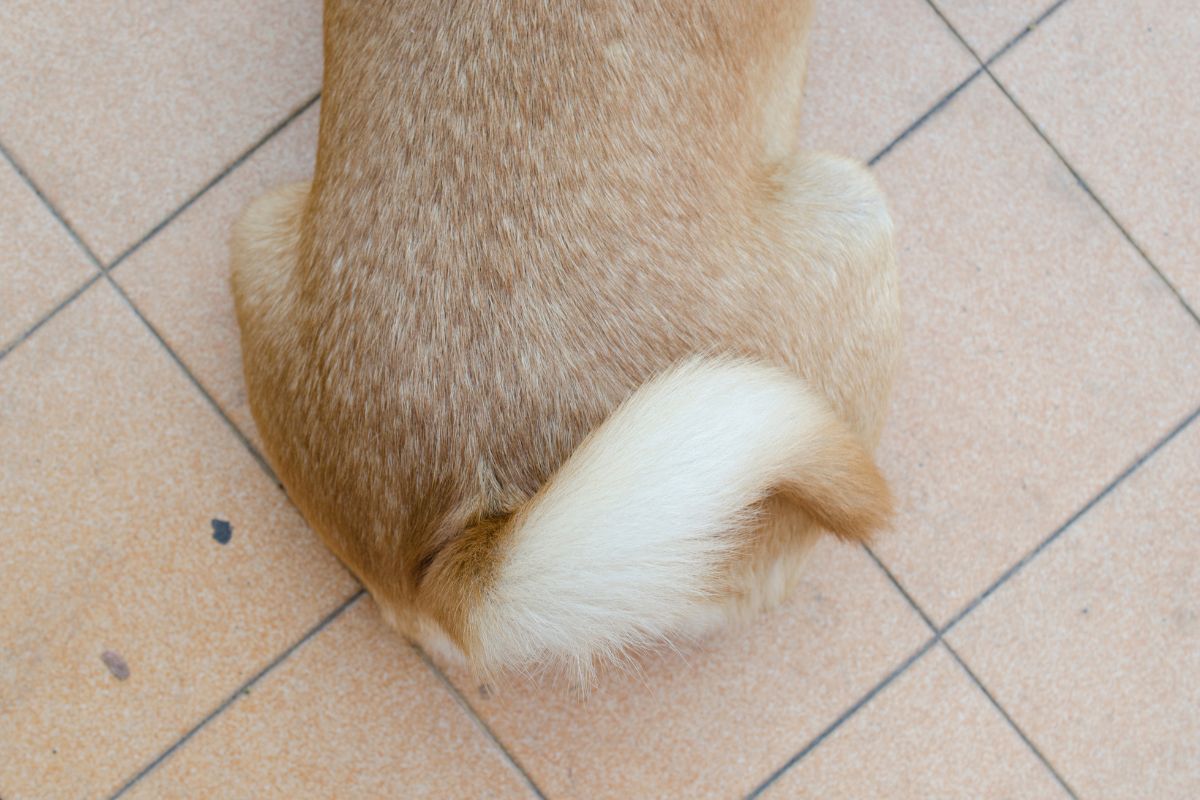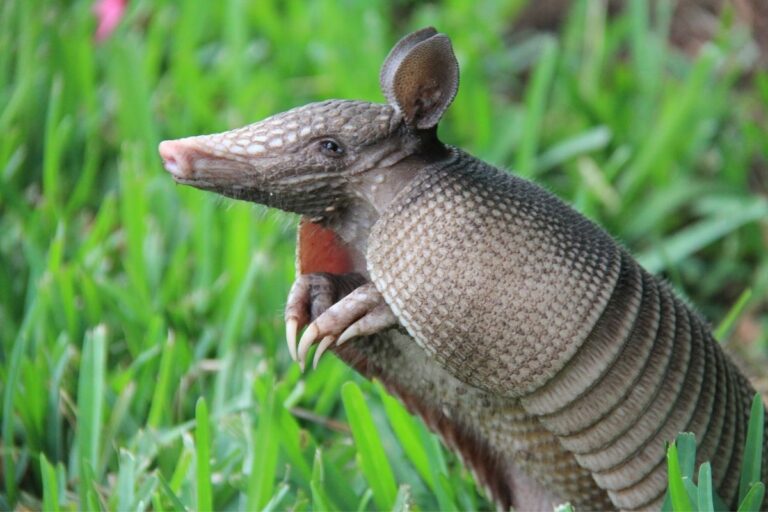Why Do Dogs Have Tails?
Last Updated on October 7, 2023 by Shu
Why do dogs have tails? Even though there are a lot of things about dogs that we love, one of the things you might not know a lot about is their tails.
People typically understand that dogs use tails for communication, which can be seen when they frantically wag their tails in excitement when they see you, but is there any else you should know about this body part?

It has recently come to light that there is a multitude of reasons why dogs have such appendages on their bodies.
Here is everything you need to know about your dog’s tail, including what they are trying to tell you when they move it.
What Are Dogs Tails Made Of?
A dog’s tail consists of an interlocking core made of bone that acts as an extension of its backbone. This core is the basic structure of the tail.
This core is wrapped in skin and protected by a layer of muscle. Within, there is a plentiful supply of blood arteries and neurons.
The muscles that are located in a dog’s tail are responsible for the animal’s capacity to wag, curl, raise, lower, and turn its tail.
Reasons Why Dogs Have Tails
Dogs carry their tails for a bunch of reasons, and it’s pretty cool for dog owners to see them swinging it around.
One major reason is communication. Yep, you heard it right. Canines use their tails to express all sorts of emotions. When they’re excited, you’ll see their tails wagging like crazy. It’s like they’re saying, “Hey, I’m super happy to see you!” On the other hand, when they’re feeling scared or anxious, their tails tuck between their legs. It’s their way of saying, “Please, stay away from me.” It’s pretty fascinating how something as simple as a tail movement can convey so much.
Another reason dogs have tails is for balance. Have you ever seen a dog chasing its tail like it’s the most fun thing ever? Well, that’s because their tails help them maintain balance while they’re running. It acts like a rudder that keeps them steady and prevents them from tripping over themselves. Just imagine a dog trying to balance without a tail. It would be like a clown stumbling around in a circus.
Dogs also use their tails for protection. Frightened dogs raise their tails high up in the air. It’s their way of saying, “Don’t mess with me, I’m ready to fight!” So, you better think twice before getting on the wrong side of a dog with a raised tail.
Lastly, who can resist a cute wagging tail? Dogs wag their tails to show affection to their pet owners. It’s their way of saying, “I love you!” So, the next time you see a dog wagging its tail, give it a pat on the head and show some love.
(Source: AKC)
Movement
Though it is not the norm now, in the past almost every dog breed was bred for a specific working purpose.
Golden retrievers for example were bred to hunt and then retrieve waterfowl and other smaller animals, mainly for sport.
Today though, you don’t need to witness them performing anything particularly amazing to see their tails wagging.
Simply toss your canine companion’s treasured toy or a treat into the air and watch him run after it, or watch him as he engages in an exciting game of chase with another canine partner.
Both of these activities are sure to keep your pet entertained.
You will most likely notice that your dog’s tail is actively assisting it in moving skillfully.
When your dog is running, they frequently need to change directions, which requires their body to have some more support.
You will see that the front legs of your pet will turn in the way that they want to go, yet their back legs will continue traveling in the way that they were traveling before.
This behavior is consistent with your dog’s natural gait.
On the other hand, the tail will turn around in the same manner so that it is facing in a new direction.
The process of tossing the tail in the same direction as the body is spinning works as a balancing method for the body of your dog, ensuring that your canine friend does not fall or spin out of control when running.
Need Tails For Balance
Not only does your dog’s tail serve as a counterbalance when he is running, but it does so all the time regardless of whether or not he is moving.
When you watch a dog walk down a path that is rather thin, you will see that the animal’s tail is exerting a great deal of effort.
Dogs use their tails in maintaining their balance in the same manner that a tightrope walker uses the balance bar to keep their footing while walking the tightrope.
Balance is kept by placing the tail’s weight on the side of the dog’s tilt that is opposite of the tilt of the dog’s body.
Dogs walking on any terrain may use their tails to assist them in maintaining their balance on surfaces that have an uneven footing, such as rocks.
Using Tails Communicate
The fact that dogs communicate with one another and with their owners through the use of their tails should not come as much of a surprise.
When coming home from work, you are probably greeted by a happy tail that is wagging vigorously. This is a sign that the pet is happy to see us again.
However, the wag of a dog’s tail may communicate a great deal more information than simply whether or not the dog is pleased.
Dogs generally communicate with one another through their tails, but humans have evolved the capacity to recognize and decipher the signals that are given off by dogs’ tails.
Dogs who are relaxed and happy will typically have their tails wagging, but worried dogs may frequently tuck their tails between their legs.
Tail wagging isn’t just a sign of happiness though. Wagging tails also create spasms in the muscles that surround the anal glands, which are located behind the tail.
These contractions help disseminate your dog’s characteristic odor throughout the environment.
Because of this, more dominant dogs have a habit of holding their tails higher than other dogs, almost as if they are attempting to signal to other dogs that they are present.
On the other hand, submissive dogs may tuck their tails under themselves to reduce the quantity of scent they give off and to hide from view.
It is also known that canines employ their tails as a mode of expression while communicating with one another.
This communication method is learned by puppies as they grow and watch other dogs interact with each other. When a puppy is between 30 and 50 days old, it will start to wag its tail.
At this age, littermates begin to play and interact with each other, learning how to communicate not just with each other but also with every other dog they would meet as adults.
Keep Warmth
When the temperature is too low for them to go outside, certain northern dog breeds, such as the Shiba Inu and the Siberian husky, can remain warm by utilizing their heavily furred tails to cover their cheeks and noses.
This keeps them from losing body heat through their extremities.
Tail Wagging In Puppies (Dog Tail Language)
Alright, let’s talk about tail wagging in puppies. It’s freaking adorable, right? I mean, I can’t help but melt every time I see a little pup wagging its tail. It’s like they’re so excited about life and just can’t contain their happiness. And to be honest, I envy that kind of enthusiasm.
Did you know that a puppy’s tail wagging is actually a form of communication? Yeah, they’re not just wagging it for fun (although it sure looks like they are). It’s their way of expressing their emotions and intentions.
For example, if a puppy is wagging its tail rapidly from side to side, it’s usually a sign that they’re super excited or happy to see you. It’s like their way of saying, “Hey! I missed you so much! Let’s play!” On the other hand, if a puppy’s is wagging slowly and the tail lower to the ground, it could mean that they’re feeling unsure or even scared. It’s kind of like their way of saying, “Uh oh, I’m not too sure about this situation.” It’s amazing how something as simple as a wagging tail can tell us so much about how a puppy is feeling.
Why Are Some Dogs With No Tails (Tail Docking)?
So, you ever wonder why some dogs are short tails or tail-less? Well, it turns out it’s not because they lost it in a wild chase or something. Nope, it’s actually a breed thing.
Some dogs are just born without tails, like it’s part of their genetics or something. And you know what’s even crazier? Some people actually prefer dogs without tails because they think it makes them look cuter. Talk about fashion trends even in the dog world!
Summary
As you can see, a dog’s tail serves many functions in the life of the dog, such as helping them with movement, balance, and communication.
You can tell a lot about a dog’s life and personality from how they hold their tail, such as whether they are adventurous and outgoing, or if they are more shy and nervous.







